Sorry, Stephen Hawking, But Every Black Hole Is Still Growing, Not Decaying

Hawking radiation should really be happening, but black holes are farther from decaying than ever before.
Black holes are, in many ways, the most extreme objects that will ever exist in our Universe. Typically formed from the deaths of very massive stars, a black hole is where an enormous amount of mass gets concentrated into such a small volume that — within a certain region of space around it — nothing can escape its gravitational pull. Inside what’s known as the black hole’s event horizon, not even light itself can escape from a black hole.
But that doesn’t mean that black holes will live forever; on the contrary, they slowly decay away due to a phenomenon known as Hawking radiation. The stronger the curvature of space is outside the event horizon, the faster the black hole decays away. Based on the black holes that can exist in our Universe, you might wonder how many have either decayed away or are decaying right now. After 13.8 billion years, the surprising answer is zero. Here’s the science of why.
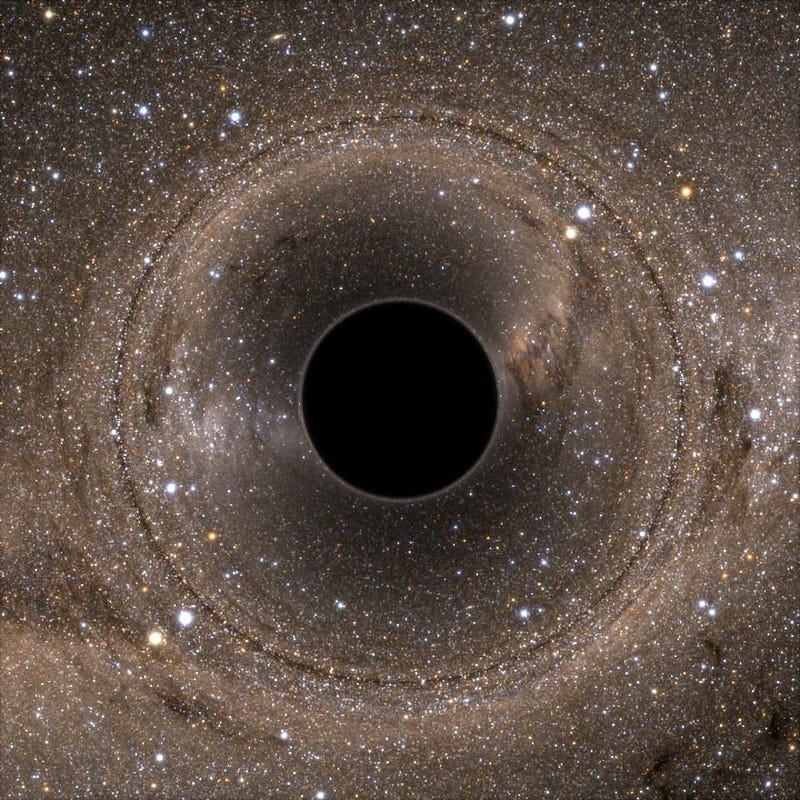
There are, to the best of our knowledge, only three ways that the Universe has to create a black hole in the first place. You can make a black hole due to:
- a supernova, where a massive star with the right properties runs out of fuel in its core, which then collapses under its own gravity, leading to a black hole if the core’s mass is high enough,
- a merger of two stellar remnants, such as two neutron stars, where the total mass of the merging objects exceeds a certain threshold, or
- direct collapse, where a large, dense clump of matter self-gravitates past a critical threshold, turning either a gas cloud or a massive star directly into a black hole with no intervening cataclysm.
All three of these are known to occur, and teach us what types of black holes exist in our Universe.
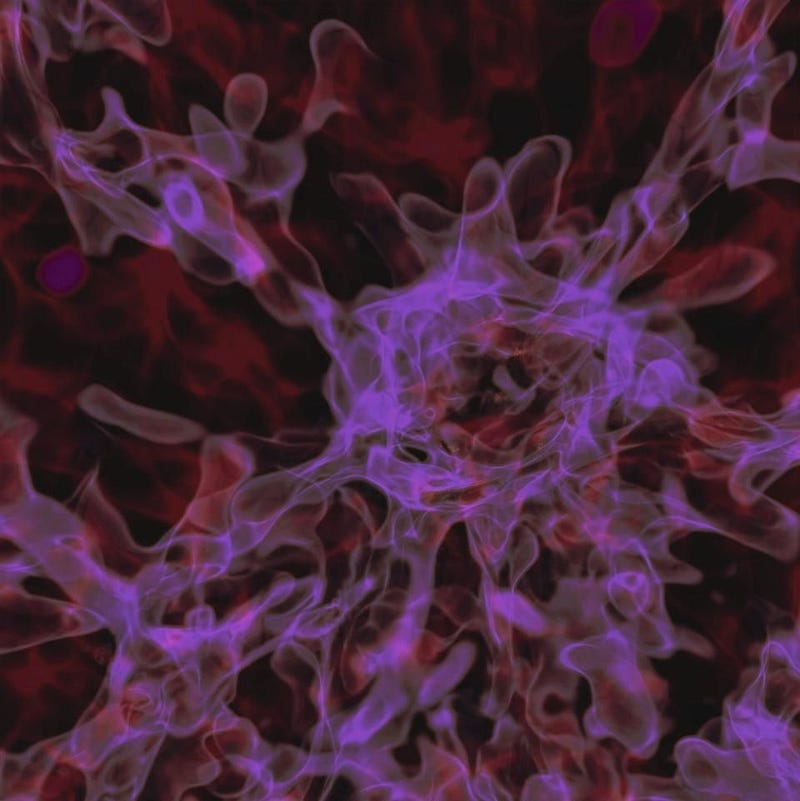
The low-end threshold for a black hole appears to be right around 2.5 solar masses. If your mass is below that threshold, individual supernovae or mergers will only lead to the formation of a neutron star; the pressure generated by the individual particles is strong enough to hold up that object against gravitational collapse. But if you exceed some maximum mass for a neutron star — 2.5 solar masses if it doesn’t rotate up to 2.75 solar masses for the fastest rotating ones — you’ll inevitably form a black hole.
But it’s easy to make larger, heavier black holes, too. More massive stars yield more massive black holes. Black holes merge together as well as absorb and accrete matter and energy. Anything that passes through the event horizon gets added to its total mass. By the present day, black holes have reached masses as high as tens of billions of times our Sun’s mass, with numerous examples discovered.
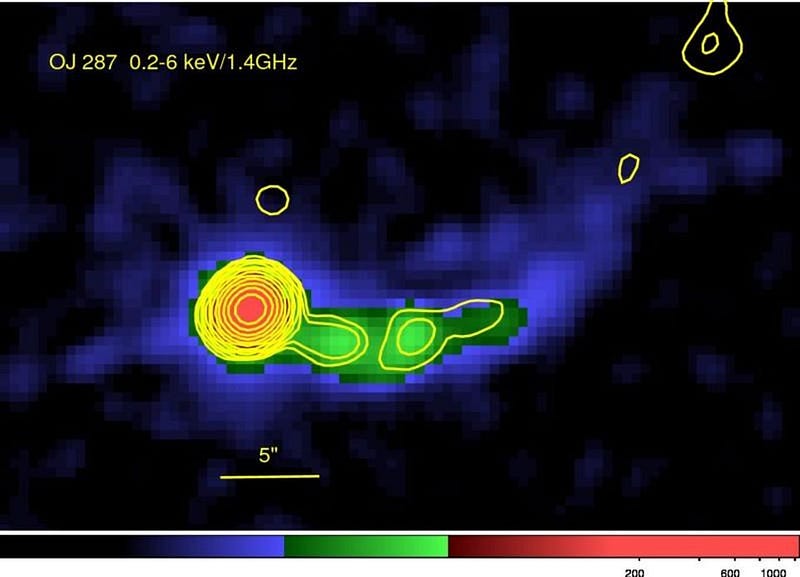
Every black hole has an event horizon around it: a region from within which nothing, not even light, can escape. Anything that falls in past the boundary of that event horizon, regardless of whether it has mass or not, will eventually encounter the black hole’s central singularity, adding to the total energy content of the black hole. If the mass/energy of a black hole grows, however, so does the physical size of the event horizon.
That’s a profound truth about all black holes: the more mass (or energy) they have, the larger the physical size of their event horizon is. Double the mass and you double the radius of your event horizon. A black hole of 6 billion solar masses has an event horizon a billion times larger in size than a black hole of just 6 solar masses. In fact, the reason we were ever able to image a black hole’s event horizon directly is because we happen to have a large, supermassive one located just 50 million light-years away.
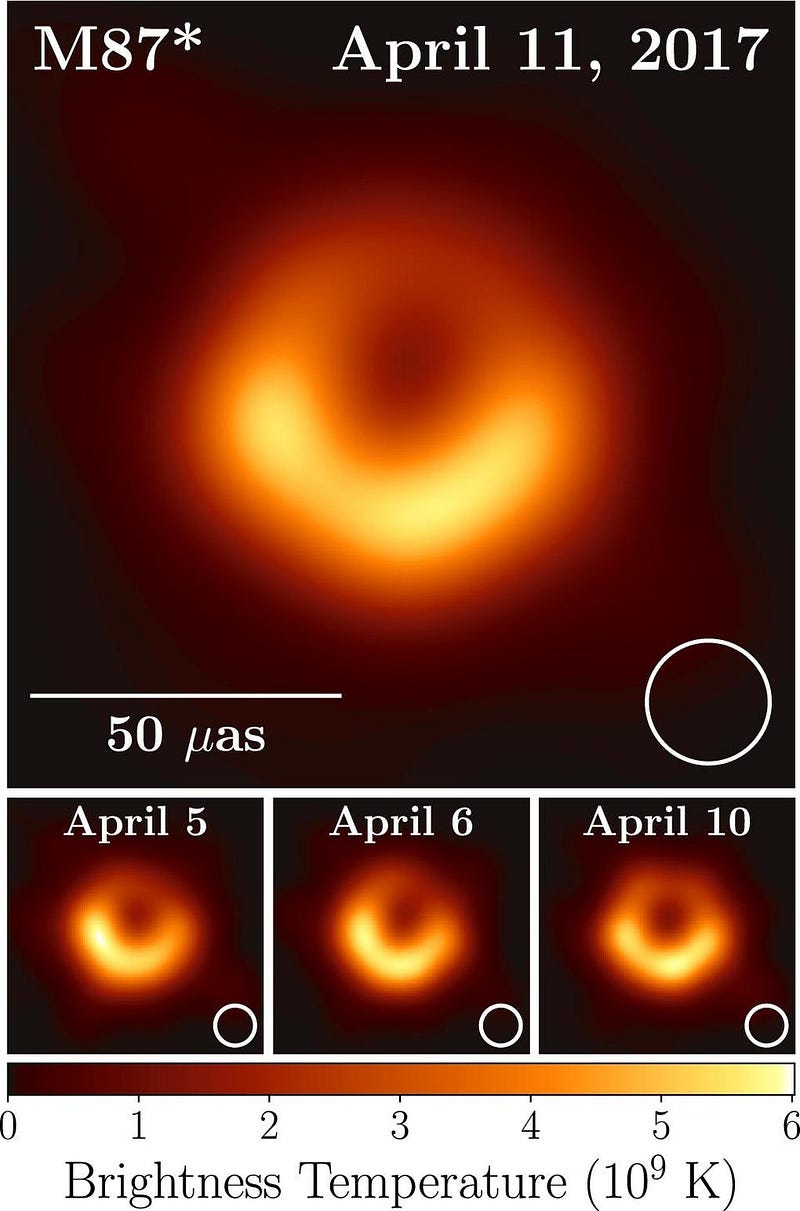
But what’s even more profound about black holes is that they constantly emit radiation, which causes them to very slowly lose mass and evaporate. The rationale for this is that even in completely empty space, even if no matter or energy is present, you always have quantum fields. The fact that we have the fundamental forces and interactions we do in this Universe means that the fields that govern them are everywhere. The “empty space” (or vacuum state) solution is the lowest-energy state those fields are allowed to possess.
But all of those calculations are done in flat, uncurved space. If your space is curved, particularly if it’s curved very strongly (like near the event horizon of a black hole), the lowest-energy state of the fields will be different from the flat-space solution. Hawking radiation was discovered by calculating those important differences between the curved space (near the black hole) and flat space (far away from the black hole) solutions.
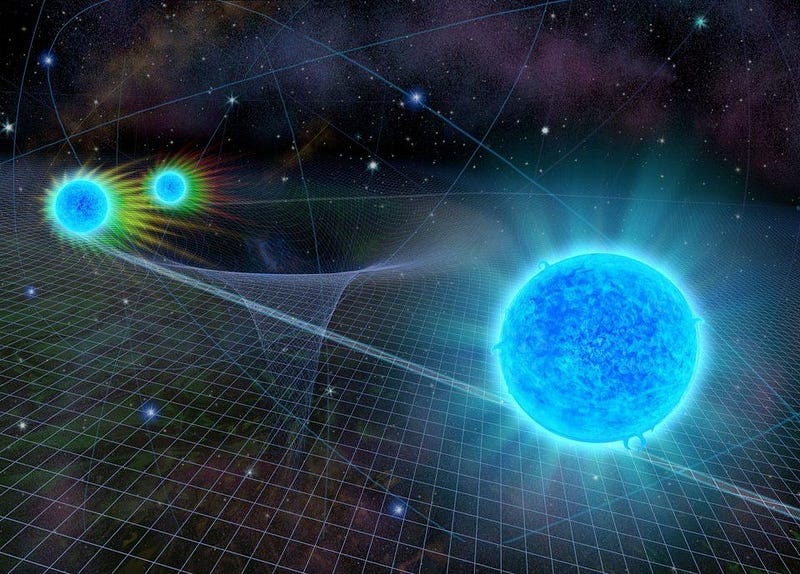
What we learn from Hawking radiation is enormously important. It tells us:
- how much radiation is emitted,
- what the rate of mass/energy loss is,
- how that’s dependent on both the black hole’s total mass and the size of its event horizon,
- and what the temperature of the radiation emitted by a black hole will be.
It might be a counterintuitive result, but because of the fact that larger, more massive black holes have larger event horizons, the rate of Hawking radiation is fastest and highest in energy for the lowest mass black holes. In other words, the smallest, lowest mass black holes are the ones that evaporate the fastest. If we want to know how fast the fastest black holes are decaying, we need to look at the lowest mass ones we can make: 2.5 solar masses.
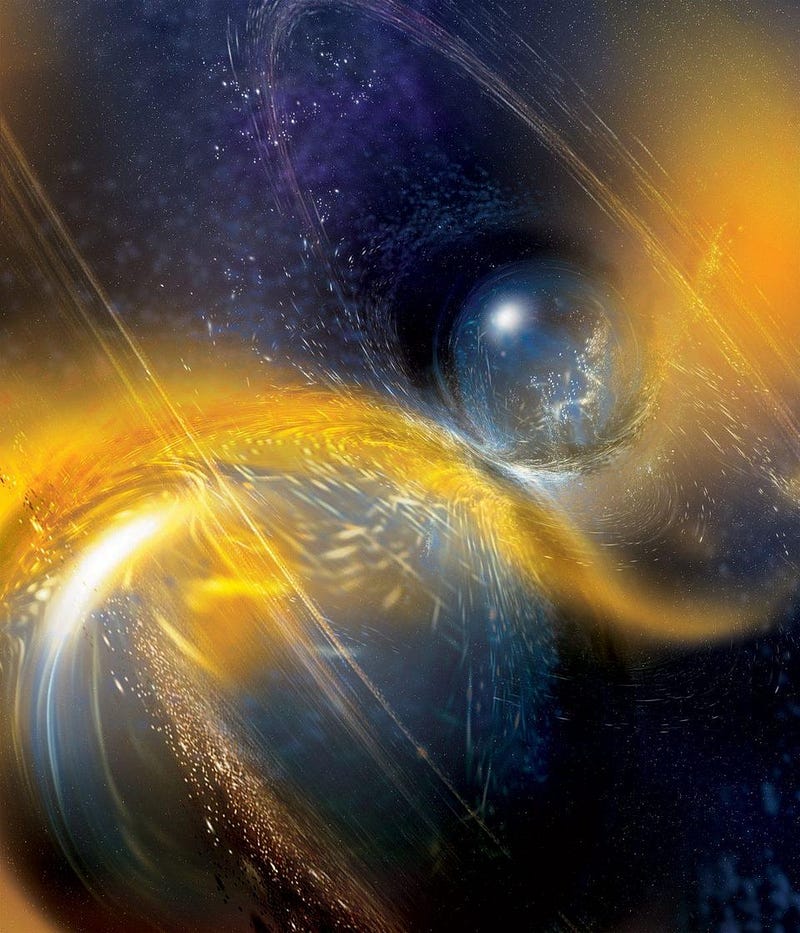
Of course, these black holes don’t just exist in isolation from the rest of the Universe. They’re just as likely as everything else to encounter all that’s out there: stars, planets, gas, dust, plasma, nuetrinos, dark matter, radiation, etc. Even if you imagine the most extreme scenario as far as isolation goes — a black hole in the depths of intergalactic space, devoid of matter — it will still have radiation to contend with from two main sources: starlight and the remnant glow from the Big Bang.
With approximately trillions of galaxies in the Universe, containing hundreds of billions of stars apiece on average, the total amount of energy that speeds through the Universe in the form of starlight is enormous: about 8 million electron-Volts of energy per cubic meter of space. But the energy from the Big Bang’s leftover glow, the cosmic microwave background, is about 30 times larger than even that.
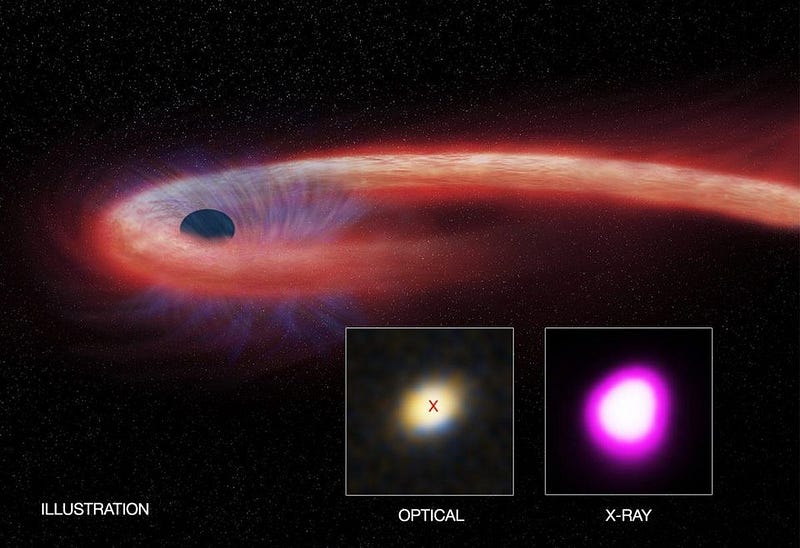
This means that there are two rates we have to compare to learn whether a black hole is actively decaying (losing more energy than it’s gaining) or growing (gaining more energy than it’s losing) over time. The Hawking radiation emitted by the lowest mass black hole the Universe can create is the maximum rate-of-loss for mass and energy, while the amount of energy absorbed by the black hole from starlight and the cosmic microwave background is the minimum rate-of-gain for mass and energy.
So, what do we get when we do those calculations?
- For Hawking radiation, this lowest mass black hole (of 2.5 solar masses) should radiate at a temperature of 25 nanokelvin, emitting approximately 10^-29 J of energy each second.
- For starlight plus the cosmic microwave background, the same black hole (of the same size as a 2.5 solar mass black hole) absorbs a total of approximately 800 J of energy each second.
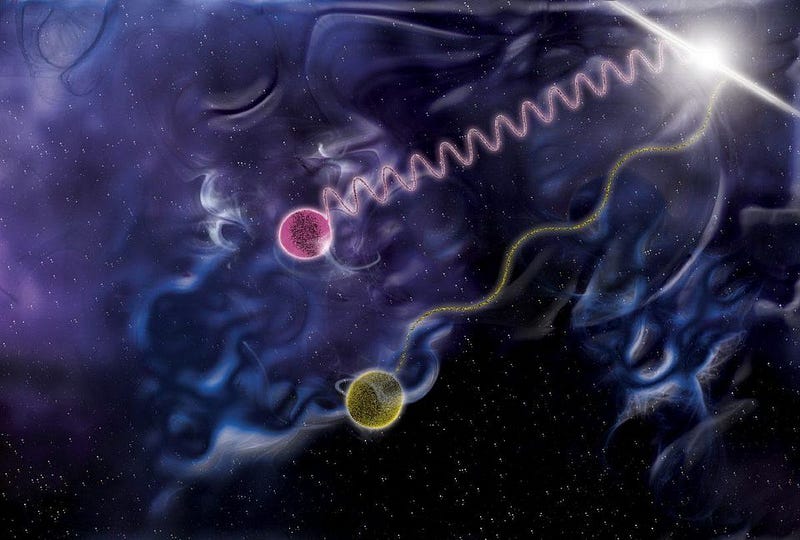
In other words, it’s not even close. A single photon from the cosmic microwave background carries about a million times more energy, on average, than all of the Hawking radiation emitted each second by a realistic black hole. Given that a 2.5 solar mass black hole absorbs about 10²⁵ of these photons each second, it’s clear that every black hole in the Universe is growing, not decaying. If you wanted your black hole to decay faster, you have two options:
- you can lower its mass, or
- you can wait.
If you had a black hole that was only about the mass of the planet Mercury, its rate of Hawking radiation would be large enough to balance the absorbed radiation, but the smallest black hole is still ~14 million times more massive than Mercury. If you waited until the Universe was about ~10²⁰ years old, the energy from absorbed starlight and cosmic microwave background radiation would at last drop below the energy emitted by Hawking radiation, but that won’t occur until the Universe is 10 billion times its present age.
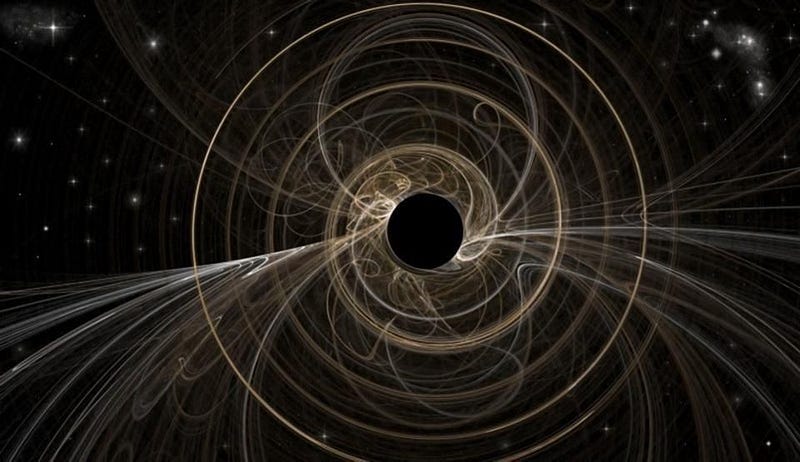
It remains true that every black hole that exists in the Universe should emit Hawking radiation, and that if you wait long enough, all of these black holes will eventually decay. But in our Universe so far, based on the black holes that actually exist, not a single black hole has even begun to decay in a meaningful way. The amount and energy of the radiation that’s out there, from starlight and left over from the Big Bang, ensures that black holes will absorb it and grow much more quickly than they lose energy from radiating it away.
Even though it’s been more than 45 years since Hawking first figured out that black holes do emit radiation, as well as what that radiation must look like, it’s far too faint and sparse for us to have ever detected it. Unless there’s a surprisingly low-mass black hole or we’re willing to wait an enormous, cosmic time for the Universe to cool, we’ll never be able to see it. Black holes are growing, not decays, and astrophysics teaches us exactly why.
Ethan Siegel is the author of Beyond the Galaxy and Treknology. You can pre-order his third book, currently in development: the Encyclopaedia Cosmologica.




